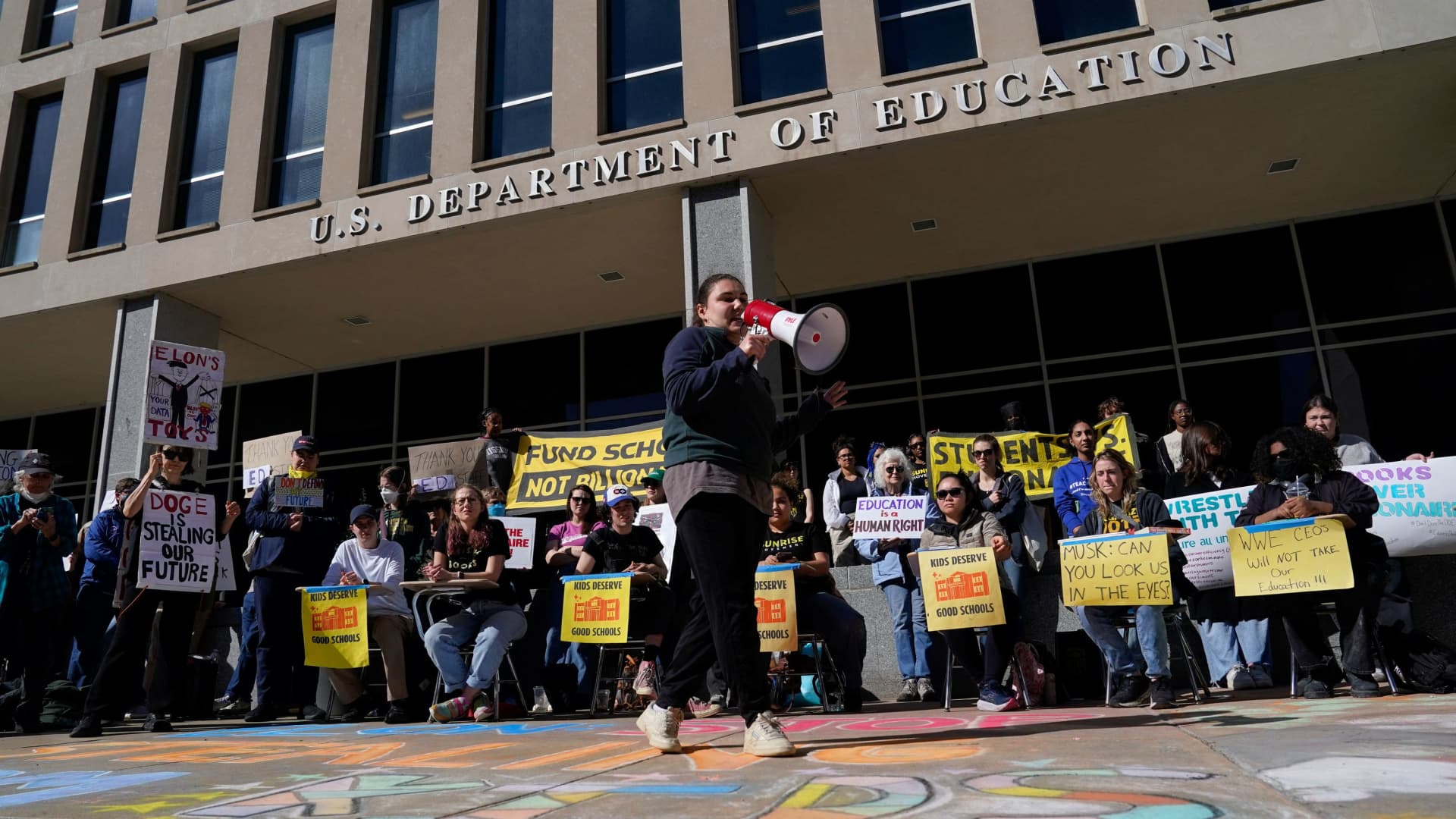Victor Dyomin | Moment | Getty Images
Many wedding costs, such as meals, invitations and favors, are based on your headcount.
The average cost of a wedding ceremony and reception in 2023 was $35,000, according to The Knot 2023 Real Weddings Study. The total cost is a $5,000 increase from 2022.
“The No. 1 way to save money on your wedding is to cut the guest count,” Shane McMurray, CEO and co-founder of The Wedding Report, recently told CNBC.
When the Covid-19 pandemic hit, engaged couples pivoted from large-scale events to smaller, intimate weddings, said Lauren Miller, owner of Tiny Wedding Collective, a wedding planning agency in Washington, D.C., and in Baltimore, Maryland.
While the average guest count at weddings has been declining since 2006 — when the average was about 184 people — the lowest average count was in 2020, when it hovered at 107 people due to pandemic restrictions, according to The Wedding Report.
Miller noted a surprising upside to the pandemic.
“What we saw was that the pandemic gave people permission to have a tiny wedding,” Miller said. “Now, you don’t need a pandemic to have a tiny wedding.”
In 2023, the average guest list was 134, The Wedding Report found.
More from Personal Finance:
Couples leverage ‘something borrowed’ to cut wedding costs
Why couples avoid talking about financial issues
Some couples are having ‘micro weddings’
Narrowing down the guest list can be difficult.
“Planning a wedding with your partner is the first big group project the two of you tackle together,” said Jessica Bishop, founder and CEO of The Budget Savvy Bride.
“The key to not hurt people’s feelings is creating a rule and sticking with it for every guest that’s invited,” said Miller.
Here are ways experts suggest reducing your wedding guest list without cutting ties with family and friends in the process:
1. Create a guest-list hierarchy
“You have to start thinking, ‘Would you buy that person a $200 dinner?’ Because that’s what you’re doing at your wedding,” said Shannon Tarrant, co-founder of the Wedding Venue Map, an online marketplace of wedding venues across central Florida.
Experts recommend engaged couples to categorize their guests into two to three lists in order of priority:
- A-List: These “are people who you would actually notice on your wedding day if they aren’t there,” said Tarrant. “That’s like your most important, VIP people.”
- B-List: The people you would love to come, but you would be fine if they declined the RSVP, said Tarrant. Miller added that the B-List could consist of “co-workers that are close to you or maybe some extended family members.”
- List C: Think of this as an extension of the B list, said Bishop. Ask yourself when the last time was that you saw a person “and had meaningful one-on-one time with them,” she said.
A lot of the etiquette rules have gone out the window.
Shannon Tarrant
co-founder of the Wedding Venue Map in Orlando, Florida
Being on a lower-priority list “doesn’t mean we’re not inviting them at this point,” said Tarrant. “We’re just starting to organize the people with a different mindset.”
“Once you figure out the list, you can really build a budget,” she said.
Sometimes your parents will have their own guest lists in mind. “If your parents are paying and contributing, you might need to allow them to have a certain number of guests,” said Bishop.
But “a lot of it is case by case,” added Bishop. If the parents are contributing financially, it is important to discuss what kind of wedding the bridal couple wants and what will be realistic.
2. Set plus-one rules
“Old-school etiquette says that if someone is married or has been in a long-term relationship more than a year … they should be invited,” said Tarrant.
“But in the world we’re living in, a lot of the etiquette rules have gone out the window,” she said.
One approach is to completely forgo plus-ones and group those individual guests in a singles table so they don’t feel alone or left out, said Shannon Underwood, vice president and conference director of Wedding Merchants Business Academy, a conference for wedding professionals.
“That’s the thing with the plus-ones — you never want to feel like you’re the only one that wasn’t allowed to bring a date and everyone else was,” said Underwood. “Consistency is key.”
Set parameters with your partner and there might be special cases, said Bishop. It is helpful to have guidelines.
It is okay to have a frank conversation with solo guests, said Tarrant. If that person does not know anyone else or have a connection to anybody else attending your wedding, you may decide it is OK for that person to bring a plus-one, she said.
Bishop noted that it is important to remember that each wedding is unique. “There are probably going to be special cases,” she said.
3. Pick a smaller venue
If you are exploring the idea of hosting a smaller wedding, keep the venue in mind, experts say.
“Sometimes when people want to plan smaller weddings, they don’t choose smaller venues. They’ll pick a venue that seats 200 and say, ‘I’m only budgeting and I only want to have 50 people,'” said Tarrant.
Choosing a more intimate venue with a smaller capacity can help you maintain a solid guest list limit, experts say.
Plus, smaller venues can also bring down the overall spending.
“The savings is not just in the food and beverage,” said Miller. “It really does trickle down overall from all of the things that you might need to rent or buy for the wedding.”
4. Avoid save-the-date invitations
Another way to wrangle the guest count is by not sending save-the-date invitations. “That also can help control the numbers,” said Tarrant, as your closest family and friends are likely to have already etched the date in their calendars.
“It’s a little sneaky,” said Tarrant, but it can help couples whose lists have run out of control, she said.
5. Have a separate, low-cost celebration
Another solution couples could consider is keeping the wedding itself small and later hosting a separate, low-cost ceremony or celebration where you invite more people, experts suggested.
“It does give you the best of both worlds,” said Bishop.
If the budget is very small, consider having a one-year anniversary party that is low cost at an affordable venue, said Underwood. “It doesn’t include all the extras and intricacies of a wedding.”
“At the end of the day, it’s just about preserving relationships and considering people’s feelings,” she said.


 Blog Post7 days ago
Blog Post7 days ago
 Economics1 week ago
Economics1 week ago
 Finance1 week ago
Finance1 week ago
 Economics1 week ago
Economics1 week ago
 Economics1 week ago
Economics1 week ago
 Personal Finance1 week ago
Personal Finance1 week ago
 Economics1 week ago
Economics1 week ago
 Accounting1 week ago
Accounting1 week ago











